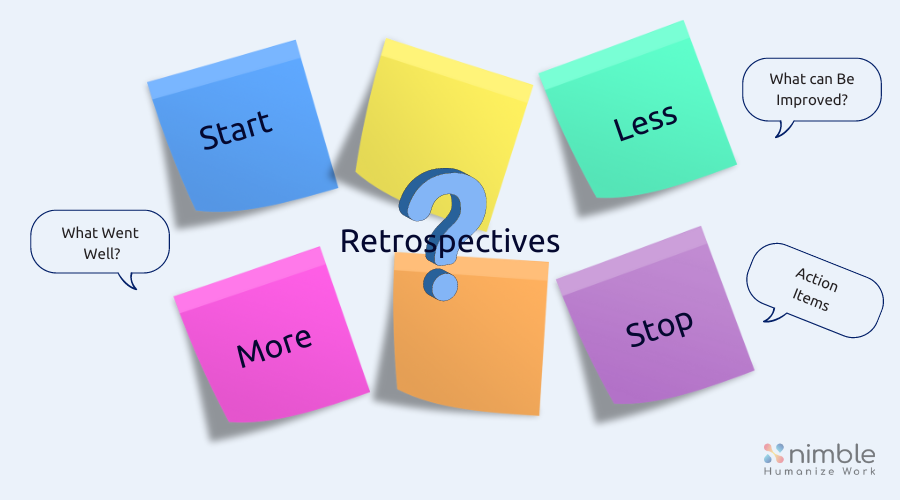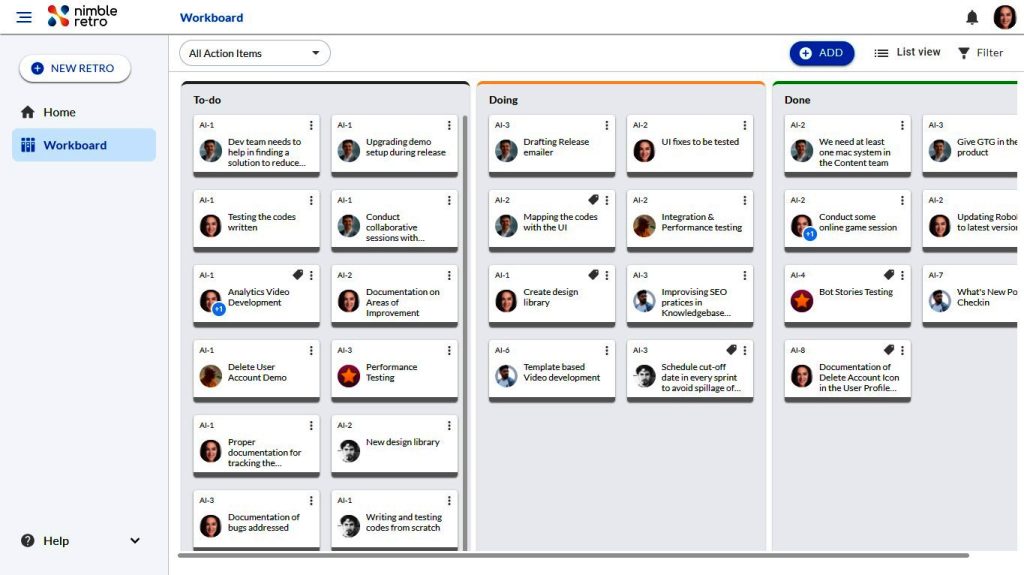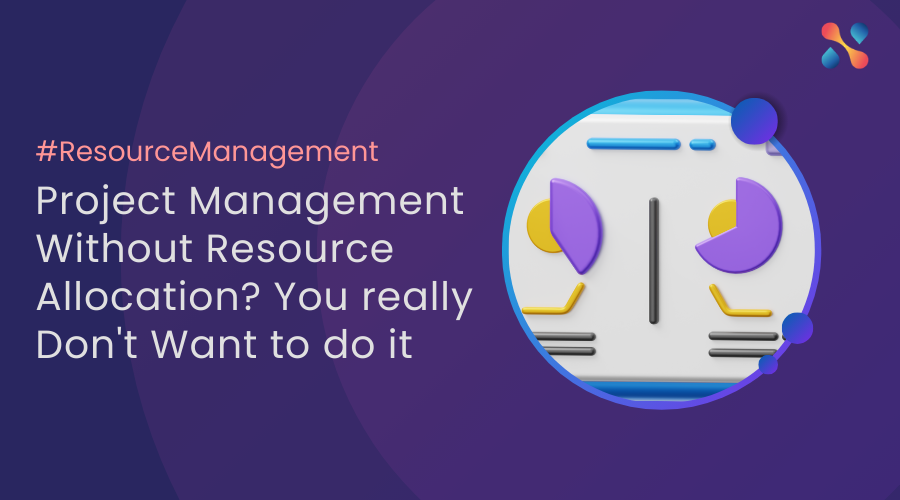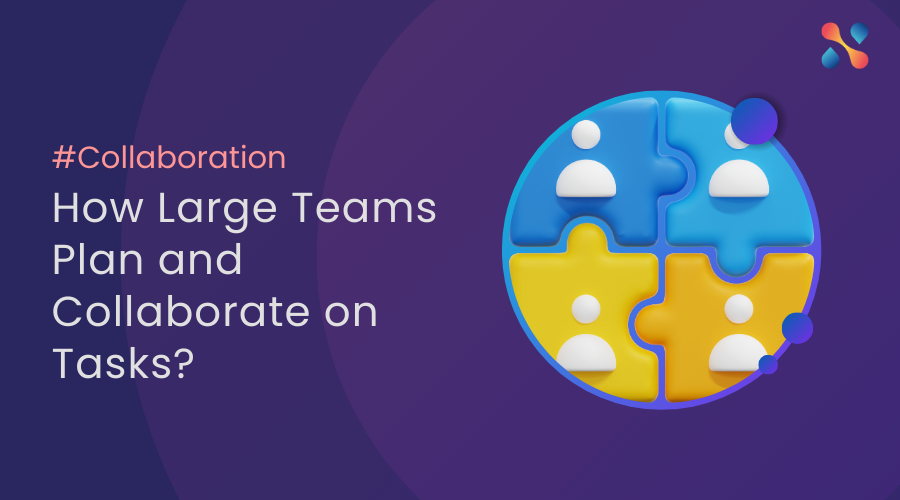Have you noticed a team that consistently delivers exceptional results? You might see them in different places. A fast-food restaurant, a Marines platoon, a customer support team, software development … there are many such possibilities. Have you wondered why these teams are so good? How do they get there?
Becoming exceptional, especially as a team, isn’t just about luck—it requires a deliberate focus on continuous improvement and reflection. These teams effortlessly adapt to change, and thrive in a culture of learning. In this article, we’ll explore one key practice that empowers these teams to reach these heights and beyond: Doing Retrospectives – the practice of regularly examining your performance and learning from them to make small – or sometimes large – changes, and continuously adapt and try to continuously improve.
Studies have shown a clear correlation between retrospectives and improved team performance. According to research conducted by Broadcom, teams conducting effective retrospectives achieve 20% higher performance compared to teams that don’t do retrospectives. This translates into significant improvements in key areas. Moreover, according to the same study teams that conduct sprint retrospectives have shown to have 24% more Customer Responsiveness and deliver 42% higher Quality with less variability.
These findings suggest that retrospectives foster a culture of continuous learning and adaptation, leading to improved performance. This benefit extends beyond software development, demonstrating that retrospectives can be valuable tools in various fields. By encouraging reflection and open communication, retrospectives can empower teams to learn from their experiences and make adjustments to improve their overall effectiveness.
Brief Overview
Retrospectives are dedicated meetings where teams come together to reflect on their recent experiences. But these aren’t just casual chats about the past week. Retrospectives are structured sessions designed to extract valuable insights from successes and failures alike. By analyzing their work, teams can identify areas for improvement, brainstorm solutions collaboratively, and ultimately refine their processes to achieve even greater results.
In addition to driving continuous improvement, retrospectives offer a unique opportunity for teams to identify patterns, trends, and recurring issues within their projects. By analyzing past experiences, teams can uncover valuable insights that serve as data points for making informed decisions in the future. Whether it’s recognizing bottlenecks in workflow, uncovering areas for process optimization, or identifying potential risks, these insights gleaned from retrospectives empower teams to proactively address challenges and capitalize on opportunities, ultimately enhancing their overall performance and productivity.
Furthermore, the concept of psychological safety emerges as a critical factor in the success of high-performing teams within the retrospective framework. Psychological safety refers to the shared belief that team members feel safe to take risks, express their ideas, and voice their concerns without fear of judgment or reprisal. In an environment characterized by psychological safety, team members are more likely to engage in open and honest dialogue during retrospectives, leading to deeper insights, richer discussions, and more meaningful outcomes. By fostering an atmosphere of trust, respect, and inclusion, teams can maximize the effectiveness of their retrospectives, driving collaboration, innovation, and continuous improvement across all levels of the organization.
Retrospectives for High-Performing Teams
The Retrospective (meeting) has traditionally been associated with Agile software development teams, particularly those that follow the Scrum methodology. However, the framework or the benefits it offers are not confined to a single function or type of team.
The core benefits of retrospectives – continuous improvement, learning, transparency, and team development – are universally applicable.
Any team that works collaboratively towards a goal can benefit from retrospectives.
Let’s explore how these benefits can transcend industries and why every team can benefit from incorporating retrospectives into their workflow.
1. Continuous Improvement Across Industries:
Regardless of the industry or sector, every team strives for continuous improvement. Whether you’re in manufacturing, healthcare, finance, or education, there are always opportunities to refine processes, enhance productivity, and deliver better outcomes. Retrospectives provide a structured framework for teams to reflect on their performance, identify areas for improvement, and implement actionable changes. By fostering a culture of continuous improvement, teams can stay agile, responsive, and competitive in today’s dynamic business landscape.
2. Empowerment and Ownership:
Empowering teams to take ownership of their work and make decisions for improvement is essential. When team members feel empowered to voice their opinions, share their insights, and drive change, they become more engaged, motivated, and invested in the success of the team. Retrospectives provide a platform for team members to collaborate, brainstorm solutions, and take ownership of their collective success, regardless of their industry or role.
3. Enhanced Productivity and Efficiency:
Efficiency and productivity are universal goals for all teams. Whether you’re producing goods, delivering services, or managing projects, optimizing workflows and streamlining processes is key to achieving success. Retrospectives enable teams to identify bottlenecks, eliminate waste, and improve efficiency by reflecting on past performance and implementing targeted improvements. By continually refining their practices, teams can maximize productivity, minimize errors, and deliver value to customers more effectively.
4. Team Cohesion and Collaboration:
Strong teamwork and collaboration are vital for success. Whether you’re working on a factory floor, in a hospital ward, or in a corporate boardroom, effective communication, trust, and collaboration are essential for achieving common goals. Retrospectives create a safe space for team members to share feedback, address conflicts, and build trust, fostering a culture of collaboration and cohesion. By working together towards shared objectives, teams can leverage their collective strengths and overcome challenges more effectively.
5. Learning and Growth:
Learning and growth are fundamental aspects of personal and professional development there’s always something new to learn and skills to develop. Retrospectives provide an opportunity for teams to reflect on their experiences, learn from successes and failures, and identify areas for growth. By fostering a culture of learning and experimentation, teams can adapt to changing circumstances, acquire new skills, and stay ahead of the curve in their respective fields.
6. Transparency and Alignment:
Whether you’re leading a small team or a large enterprise, ensuring that everyone is aligned with the organization’s goals and values is essential for driving performance and innovation. Retrospectives promote transparency by encouraging open communication, sharing of information, and alignment of goals and priorities. By fostering a culture of transparency and alignment, teams can work cohesively towards shared objectives, driving organizational success and growth.
In conclusion, the benefits of retrospectives are not limited to software development teams but can be harnessed by High-Performing Teams across industries and sectors. By embracing the principles and practices of retrospectives, teams can foster a culture of continuous improvement, empower their members, enhance productivity, and ultimately achieve exceptional results. Retrospectives offer a powerful framework for high-performing teams to not only maintain their success but also continuously push boundaries and reach even greater heights.
Application of Retrospectives in Various Business Functions
These real-world examples showcase the power of retrospective tools in various industries:
1. Software Development Teams
Challenge: Maintain high productivity and collaboration among geographically dispersed development teams.
How Retros can help: Retrospectives are a powerful tool to improve team dynamics, even for geographically dispersed teams. These facilitated discussions allow for shared perspectives and actionable insights, regardless of location. By reflecting on past processes and identifying bottlenecks, teams can continuously improve.
Expected Benefits: Implementing retrospectives fosters open discussions, leading to shared perspectives and actionable insights. By identifying process bottlenecks and implementing improvements, project velocity is expected to increase by 15% and decrease in cycle time by 20%.
2. Healthcare Teams
Challenge: Streamline clinical trials to expedite patient access to potentially life-saving treatments. Lengthy data collection processes can significantly delay trial completion, hindering patient access to new therapies.
How Retros can help: Regularly incorporating retrospectives into the clinical trial process can significantly improve efficiency. These facilitated discussions allow teams to analyze each phase of the trial, identify bottlenecks, and implement improvements. By splitting the trial phases into manageable cycles (e.g., monthly sprints) and reflecting on each stage, teams can continuously optimize the process. Through retrospectives, teams can discover areas for streamlining data collection, identify best practices, and ultimately expedite trial completion.
Expected Benefits: Implementing retrospectives fosters a culture of continuous improvement among clinical teams. By sharing best practices and identifying opportunities for optimization, clinical trials can become more streamlined, potentially reducing wait times and improving patient satisfaction.
3. Manufacturing Teams
Challenge: Continuously improve efficiency across all levels of manufacturing operations, from design and procurement to production floor processes.
How Retros can help: Retrospectives can be a powerful tool for manufacturing teams at all levels. Regularly facilitated discussions allow teams to identify and address challenges that hinder efficiency.
Product Design & Raw Material Procurement: These teams can use retrospectives to analyze and optimize their processes. Discussions can focus on minimizing waste in product design, exploring alternative materials or suppliers to reduce procurement costs, and ensuring designs are manufacturable.
Production Line Efficiency: Production line workers can use retrospectives to anonymously share challenges they face, such as frequent equipment malfunctions or unclear production instructions. This feedback empowers workers and allows management to identify areas for improvement, potentially leading to investments in preventative maintenance or the development of clearer visual guides.
Expected Benefits: Conducting Retrospectives can drive teams to continuous improvement initiatives. Enhance cross-functional collaboration and knowledge sharing leading to a 20% reduction in production defects and a 15% increase in production output .Reduced downtime, empowered line workers, and increased morale and productivity. Analyzing feedback helps management identify areas for improvement, such as investing in preventative equipment maintenance or developing clearer visual guides for production processes.
4. Marketing Agencies
Challenge: Analyze a recent email or social media campaign to understand successes and areas for improvement. This could include high engagement on a specific platform but lower click-through rates on banner ads.
How Retros can help: Implementing Retrospectives to facilitate collaborative brainstorming. The team can capture key points (successes and areas for improvement) on the tool and work together to identify ways to optimize future campaigns.
Expected Benefits: Improved campaign performance through actionable insights gained from analyzing successes and failures. This may lead to strategies for increasing click-through rates or replicating success on other platforms.
Summary
Retrospectives are an invaluable tool in driving continuous improvement and enhancing productivity among high-performing teams across various industries. Retrospectives need not be limited to software development teams but can benefit any team striving for excellence. Key benefits of doing retrospectives regularly include promoting shared learning, improved communication, teamwork, adaptability, learning, and growth, leading to dramatically improved productivity and efficiency.
Are you doing Retrospectives or following other (continuous) improvement practices? We would LOVE to hear from you about them!
Accelerating the Implementation and Impact of Retrospectives:
If you or your teams are looking to improve continuously, doing Retrospectives might be the single most effective way to start moving in the right direction. , If your teams are distributed, or work in a hybrid fashion, as most teams today are, using dedicated retrospective tools like NimbleRetro can be really beneficial. These tools make it easy to implement retrospectives by providing structured approaches with customizable templates and guides, facilitating focused and productive discussions.
Nimble Retro Workboard
Nimble Retro’s features such as time-bound sessions, anonymity for open communication, and built-in problem exploration methods like the “5 Why” analysis can further streamline the process. By leveraging these tools, teams can accelerate the implementation of Retrospectives, maximize their effectiveness, and achieve greater levels of performance and success faster and cheaper. Check out more about Nimble Retro or sign up for a Free trial.









